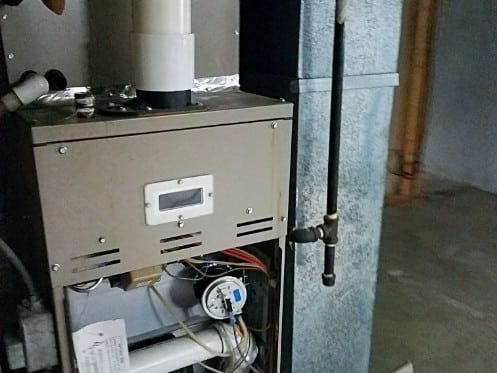
Specialists in heating, ventilation and air conditioning (HVAC) use a multipronged strategy, taking into account a wide range of criteria, to guarantee that the chosen furnace will adequately heat the home. Choosing the correct size of furnace impacts your home’s comfort, efficiency and cost-effectiveness. Optimal furnace size is the result of a complex process that includes environmental factors and careful heating load estimates, as discussed in this guide.
Heating Load Calculation
A thorough heating load estimate is the foundation for choosing the appropriate furnace size. The square footage plays a major role in this assessment. Furnaces that provide more heat are necessary for larger houses. Heating a home typically requires 30 to 60 British Thermal Units (BTUs) per square foot. However, this may vary greatly depending on the local temperature.
Standard (BTUs) for homes of a certain size are as follows:
- 1,200-square-foot house: 35,000–75,000 BTUs
- 1,800-square-foot house: 55,000–110,000 BTUs
- 2,100-square-foot house: 65,000–125,000 BTUs
- 2,400-square-foot house: 70,000–145,000 BTUs
Fuel Efficiency
New furnaces can increase comfort and cut utility expenditures for homeowners. To achieve these goals, professionals prioritize efficiency when selecting the right size of furnace. Modern high-efficiency furnaces can cut fuel expenses by as much as 45%. Plus, they are quieter and better for home relaxation.
The question is, what efficiency level is ideal? According to the Department of Energy, all gas furnaces must have an AFUE (Annual Fuel Utilization Efficiency) of 80% or above. This proves that the furnace is effective at heating 80% of the fuel. An ENERGY STAR furnace requires an AFUE of 90% or above. AFUEs range from 94% to 98.5% in high-efficiency furnaces. A 90–93% AFUE is the mark for mid-efficiency furnaces.
Local Climate
When sizing furnaces for maximum heating efficiency, experts in Shawnee carefully examine regional weather trends. Knowing the climate patterns is crucial due to the region’s severe winters and unpredictable weather. By taking Shawnee’s climate into account, they can choose a furnace that efficiently heats your home throughout the coldest winter months.
Window Efficiency
Because windows affect heat loss or gain in a house, window efficiency is an important factor to consider when sizing a furnace. To precisely measure their impact on the heating load, experts examine elements like insulation, glass and window count. Just because your home has a large number of windows doesn’t necessarily mean it needs a higher-capacity furnace. The windows’ level of insulation is what most determines whether a higher-capacity heater is necessary.
Ceiling Height
Because it affects the total volume of room that needs heating, ceiling height is another important factor to consider when choosing the right furnace size. Experts account for higher ceilings since more air will move through the space, which raises the heating load. Homes with higher ceilings usually require higher-capacity furnaces.
Zoning Preferences
The homeowner’s desire for temperature zoning, in which separate rooms in the house have their own temperature controls, is an important consideration. Accurate temperature regulation in distinct zones is possible with furnaces that have variable-speed capabilities or multi-stage heating systems. By taking the homeowner’s zoning preferences into account, professionals can choose a furnace that will maximize comfort and energy efficiency across the whole living area.
Insulation and Air Leaks
Homes with proper insulation and few air leaks can retain heat more efficiently, which affects choosing the right size pf furnace. Homes with poor insulation and lots of air leaks lose a lot of heat, making the furnace work harder to heat the home. As a result, a furnace with a higher capacity is sometimes needed to keep the home at a comfortable temperature. One of the easiest ways to save money on a furnace is to buy a lower-capacity system. However, in order to do this, homeowners must make sure their homes have adequate insulation and minimal air leaks.
Orientation of the House
How much sunshine a home gets and how much heat it absorbs are both affected by its orientation. HVAC experts can predict how much sunshine will affect the heating demand by looking at the orientation. Homes that face south may get more sunshine, meaning they have a lower heating need, while those that face north may have a higher heating demand.
The right size of furnace for your home will maximize its energy efficiency. This will translate into lower heating bills and fewer repairs. Choosing the right size of furnace also impacts several other aspects of your home, including indoor air quality and humidity control. This is why it’s so important to let a professional help you choose the right size. Air Care Heating & Cooling helps Shawnee homeowners with heating and cooling installations and repairs. We also offer indoor air quality testing, mini-split systems, geothermal heating and cooling and much more. Call us now to learn more about choosing the right size of furnace for your home.
